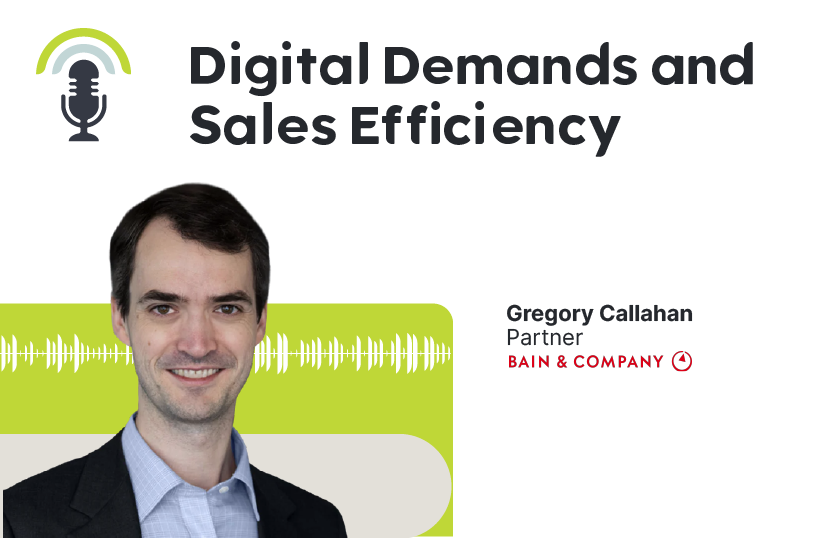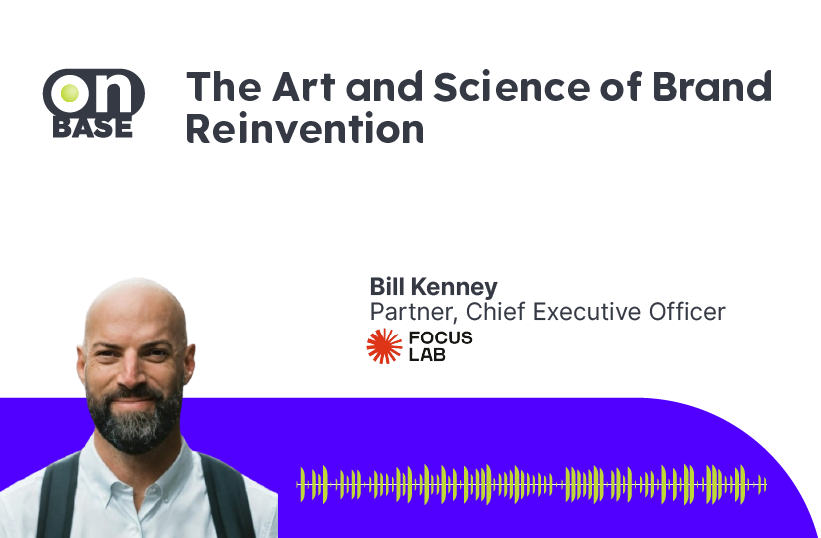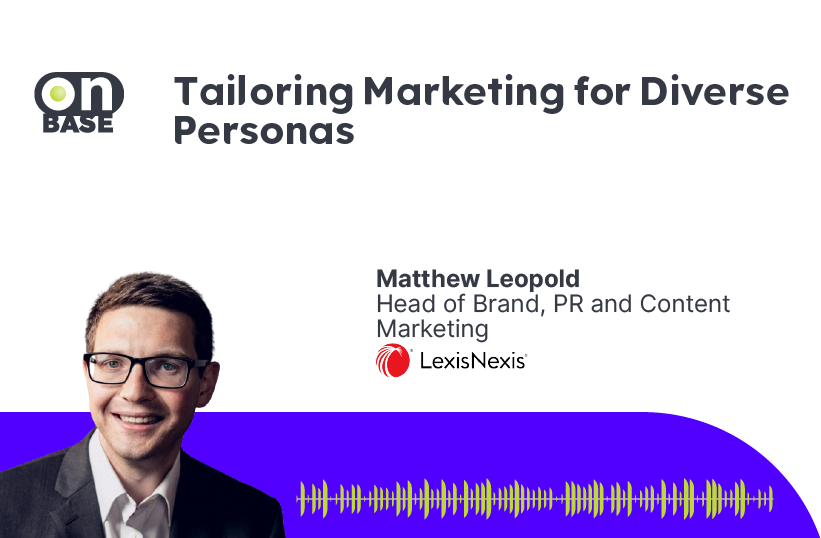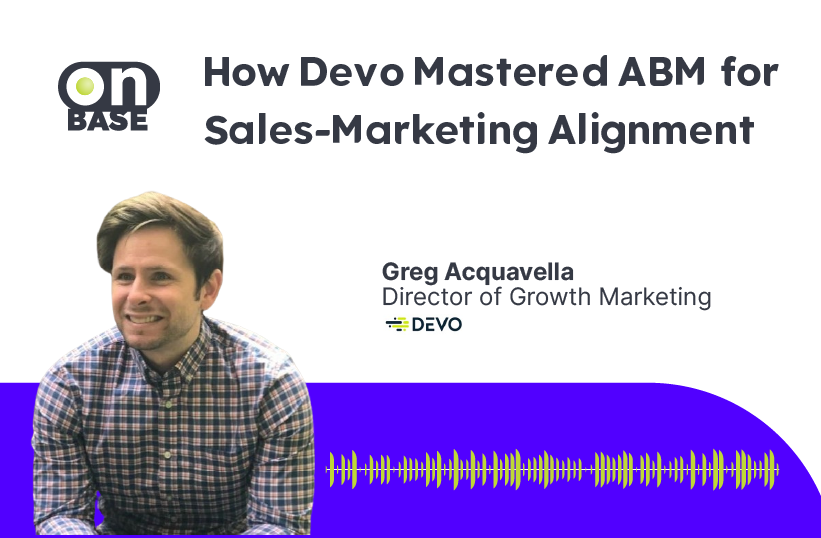
Navigating Digital Demands and Sales Efficiency in Today’s Market
Shownotes
In this episode of Sunny Side Up, host Randy Ilas interviews Gregory Callahan, Partner and Founder of Bain & Company. This episode explores the ways that companies are adapting to the new digital landscape due to COVID-19. It looks at how businesses can leverage their digital capabilities to personalize their offering and deliver leads faster. Additionally, it touches on the importance of understanding customer needs and creating an ideal customer profile, as well as providing bite-sized trials of products before purchase and leveraging independent third-party reviews to create a better customer experience. Finally, it covers how sales and marketing teams must work together to execute successful ABM strategies.
About the Guest
Greg Callahan is a Partner at Bain & Company. He works with tech-enabled businesses to help them accelerate top and bottom-line performance. Greg is also the founder and product leader for Coro Account Planning (Bain’s digital account planning tool) and leads Bain’s Account Planning and RevOps practices globally. In his work with Bain’s clients, Greg has developed a blueprint for getting the most yield out of your customers that have the most potential.
Key Takeaways
- The COVID-19 pandemic necessitated a significant pivot towards B2B marketing, with a focus on building digital capabilities.
- Traditional in-person interactions were replaced by virtual meetings and digital outreach.
- The acceleration in B2B marketing resulted in a merging of B2C marketing practices into the B2B realm.
- The importance of personalized and tailored marketing campaigns for different industries and customer segments.
- The concept of virtual sales emerged, allowing for specialized industry and product expertise to be present in customer interactions.
- Virtual selling has shown higher win rates, enabling more efficient and effective sales conversations.
- The challenge of determining the right balance between field-based and virtual sales resources.
- The significance of maintaining a positive and selling-oriented culture within organizations.
- The need for sales and marketing to work together as a cohesive system, driven by aligned incentives and open dialogue.
- The importance of focusing on high-quality leads and confronting “zombie pipe” to maximize efficiency.
- The shift towards agile sales and marketing plays is supported by a system that enables reps and teams to deliver results.
- The role of leadership involvement in bridging the gap between sales and marketing teams.
- Staying informed about the economy, industry trends, and competitor performance to better engage with customers.
- Seeking insights and perspectives from peers and industry forums to expand knowledge and test theories.
- The value of building a sales and marketing system that streamlines processes and allows for effective collaboration.
Quotes
“Trust is earned, it’s not just awarded. It does take time.”
– Gregory Callahan
Highlights from the Episode
Talk a little bit about how some of the impacts of COVID have changed B2B selling and marketing.
Gregory explains that the COVID pandemic brought about a significant shift in B2B selling and marketing. Before the pandemic, the focus was on increasing the number of sales reps in the field and driving that forward. However, with the restrictions on physical interactions, there was a massive pivot towards B2B marketing. B2C marketing had always been more advanced in terms of personalization and effectiveness, so the goal was to bring those strategies into the B2B space. This led to a rapid acceleration in demand generation and the need to develop digital capabilities. While there were challenges in generating conversations with customers, the shift enabled higher-quality and more personalized conversations through virtual interactions. Overall, COVID prompted a reevaluation of B2B selling and marketing approaches.
How has the shift towards digital marketing and lead generation impacted overall strategy?
Gregory acknowledges that the shift towards digital marketing and lead generation has had a significant impact on overall strategy. The expectation now is for companies to interact with customers in a digital environment, and there is a growing reliance on digital channels for research and decision-making. This shift has necessitated a reevaluation of resource allocation to maximize return on investment. Companies are grappling with decisions such as investing in big events, field sales, or marketing efforts to achieve the highest ROI. Additionally, there is a challenge in maintaining a positive sales-oriented culture and keeping top performers motivated in this new digital landscape. The shift towards digital marketing has fundamentally transformed the way companies approach their strategies and engage with customers.
What are the new challenges presented by the shift toward digital interactions with companies?
Gregory highlights that the shift towards digital interactions with companies has introduced a series of new challenges. Firstly, customers now conduct extensive research online before engaging with companies, with studies suggesting that around 80% of customers engage in pre-purchase research. This necessitates companies to have a strong online presence and provide valuable digital content to capture and retain customer interest. Secondly, there is a need to find effective ways to generate conversations and leads in the digital space. Companies must adapt their lead generation strategies to cut through the noise and reach their target audience effectively. Thirdly, there is a continual challenge in building and maintaining a positive and sales-oriented culture within organizations. The shift towards digital interactions requires ongoing motivation and support for sales teams to excel in this new environment. Overall, the shift towards digital interactions brings both opportunities and challenges that companies must navigate to succeed in the evolving business landscape.
How are companies grappling with training salespeople and preparing them for the changes in the sales process due to ABM and the need for sales and marketing to work together?
Greg explains that companies are shifting their focus from traditional marketing campaigns to sales and marketing plays, emphasizing the need for a system that integrates both departments. He emphasizes the importance of tailoring marketing and sales approaches to different customer groups based on their needs and behaviors. By creating plays that are specific to each customer segment, companies can drive accountability within the sales team and enable them to have more effective conversations. This approach makes sales enablement easier as reps can focus on the specific needs of their target customers. The plays are continuously fine-tuned through coaching and feedback from marketing, sales, and product teams. This shift toward a sales and marketing system allows reps to spend more time engaging with customers and less time searching for information, resulting in increased efficiency and productivity.
How have you seen companies start to build a connection point between sales and marketing to ensure that they are on the same platform and working together effectively?
Greg explained that building a strong connection between sales and marketing takes time and trust. He highlighted two key factors. Firstly, aligning incentives is crucial, ensuring that both teams are motivated to collaborate and support each other. Organizations are shifting towards setting targets based on opportunities approved or closed by sales, and providing bonus incentives accordingly. Secondly, open dialogue between the two teams is essential. Gregory emphasized the importance of bringing sales and marketing together to have conversations about targets, messaging, and feedback. Breaking down barriers and fostering communication becomes even more vital in a virtual work environment where face-to-face interactions are limited.
What is the current economic state and how are companies adapting to the changes?
Gregory explains that the economic situation has been challenging, with many companies laying off employees. He mentions that initially, people had high hopes due to their pipelines, but the actual results were not as promising. He discusses how a significant portion of the pipeline is considered a “zombie pipe” that will never close. He emphasizes that the number of opportunities has decreased, and companies are facing the need to have different conversations and adjust their strategies accordingly.
How do you stay informed about the economy and industry performance?
Greg mentioned two main sources of information he relies on. Firstly, he mentioned reading simple updates like the Bloomberg daily updates to gain insights into the economy, consumer spending, and industry performance. He looks for indicators such as demand trends and earnings reports to understand which industries are thriving and which are struggling. This helps him prepare for meetings and align his mindset accordingly. Secondly, Gregory emphasized the importance of engaging with peers through meetups and forums. By actively listening to others and discussing their business performances, he can gather diverse perspectives and validate his observations, such as the concept of a “zombie pipe” or the importance of guardrails. These conversations allow him to test theories and gain a deeper understanding of the current business landscape, which he believes goes beyond what traditional news sources offer.

Sunny Side Up
B2B podcast for, Smarter GTM™



